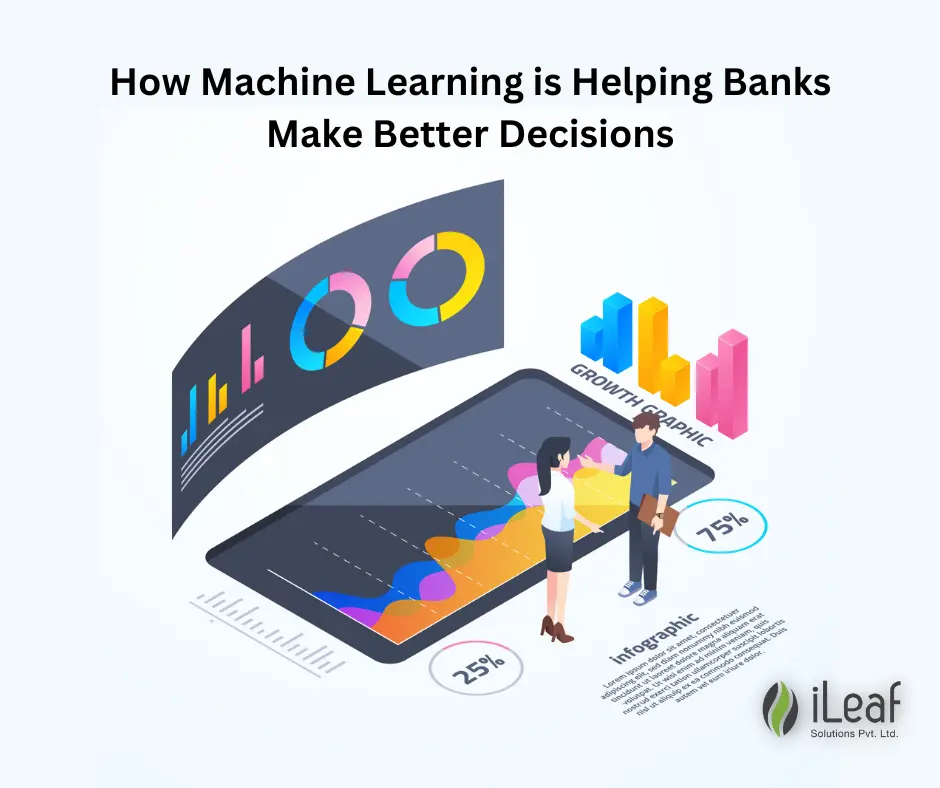Predictive Analytics in Finance: How Machine Learning is Helping Banks Make Better Decisions

Understanding Machine Learning and its Role in Predictive Analytics
Before we dive into the benefits of predictive analytics in finance, it's important to understand what machine learning is and how it plays a role in predictive analytics. Machine learning is a subset of artificial intelligence that allows computers to learn from data and make predictions or decisions based on that data. Machine learning algorithms can analyze vast amounts of data to uncover patterns, relationships, and insights that humans might not be able to see.
In predictive analytics, machine learning algorithms are used to analyze past data and make predictions about future events. For example, a bank might use machine learning to analyze past customer data to predict which customers are most likely to default on a loan. By identifying these high-risk customers, the bank can take steps to mitigate the risk and avoid losses.
Benefits of Predictive Analytics in Finance
The benefits of predictive analytics in finance are numerous. By analyzing vast amounts of data, predictive analytics can help financial institutions make data-driven decisions that result in improved profitability, reduced costs, and better customer satisfaction. Here are some of the key benefits of predictive analytics in finance:
- Reduced Risk: Predictive analytics can help financial institutions manage risk by identifying potential risks before they become problems. For example, a bank might use predictive analytics to identify high-risk customers or investments and take steps to mitigate the risk.
- Improved Customer Satisfaction: Predictive analytics can help financial institutions better understand their customers and provide more personalized services. By analyzing customer data, banks can make predictions about customer behavior and preferences, and use that information to tailor their services to meet customer needs.
- Increased Profitability: By using predictive analytics to make data-driven decisions, financial institutions can improve their profitability. For example, a bank might use predictive analytics to identify which products or services are most profitable and focus on those areas.
Real-world Applications of Predictive Analytics in Banking
Predictive analytics is being used in a variety of ways in the finance industry. Here are some real-world examples of how machine learning is being applied in finance:
Fraud Detection: Banks are using predictive analytics to identify fraudulent transactions before they occur. By analyzing past transaction data and identifying patterns of fraud, banks can use machine learning algorithms to predict which transactions are likely to be fraudulent and take steps to prevent them.
Credit Scoring: Predictive analytics is being used to improve credit scoring models. By analyzing vast amounts of data about customers, including credit history, income, and other factors, machine learning algorithms can predict which customers are most likely to default on a loan.
Investment Management: Predictive analytics is being used to identify profitable investment opportunities. By analyzing market data and identifying trends, machine learning algorithms can predict which investments are most likely to generate a high return.
Cons of predictive analytics in finance
Predictive analytics in finance brings numerous advantages, but it also presents certain challenges and limitations. A major obstacle revolves around the requirement for top-notch data. The effectiveness of machine learning algorithms heavily relies on the quality and timeliness of the data used for training. Financial institutions must therefore prioritize accuracy and currency in their data to maximize the benefits of predictive analytics.
Major predictive analytics techniques:
Regression Analysis: Regression analysis, a statistical technique, facilitates the examination of relationships between multiple variables. In finance, regression analysis proves valuable for forecasting future values based on historical data.
Cluster Analysis: Cluster analysis is employed to categorize similar data points into groups. Within finance, this technique is useful for identifying clusters of customers sharing common characteristics, such as income levels or credit histories.
Decision Trees: Decision trees provide a visual representation of decision-making processes. In finance, decision trees can guide investment decisions and aid in determining which products should be offered to customers.
By utilizing these predictive analytics techniques, financial institutions can enhance their decision-making processes and derive valuable insights from their data.
How Banks can Implement Predictive Analytics
Implementing predictive analytics in finance can be a complex process, but there are several steps that banks can take to make the process easier:
- Define Goals: Before implementing predictive analytics, banks need to define their goals and objectives. What problems are they trying to solve? What outcomes are they hoping to achieve?
- Collect Data: Banks need to collect high-quality data that is relevant to their goals. This may involve gathering data from multiple sources, including internal data and external data sources.
- Choose Algorithms: Banks need to choose the right machine learning algorithms for their goals. This may involve working with data scientists or hiring outside experts to help with the selection process.
- Train Algorithms: Once algorithms have been chosen, they need to be trained on the data. This involves feeding the algorithms with data and adjusting the algorithms to improve accuracy.
Future of Predictive Analytics in Finance
As technology continues to advance, financial institutions will have access to even more data and more powerful machine learning algorithms. This will allow them to make even more accurate predictions and better data-driven decisions.
One area where predictive analytics is likely to have a big impact is in the area of customer service. By analyzing customer data, financial institutions will be able to provide more personalized services and better meet the needs of their customers.
Case Studies of Predictive Analytics in Banking
There are many examples of financial institutions that are using predictive analytics to make data-driven decisions. Here are two case studies:
- JPMorgan Chase: JPMorgan Chase is using machine learning to improve its credit risk assessments. By analyzing vast amounts of data about customers, including spending patterns and credit history, JPMorgan Chase is able to make more accurate predictions about which customers are most likely to default on a loan.
- Capital One: Capital One is using predictive analytics to identify potential fraudsters. By analyzing transaction data, Capital One is able to identify patterns of fraud and predict which transactions are likely to be fraudulent.
Conclusion: The Importance of Machine Learning in Finance
Predictive analytics is revolutionizing the finance industry, allowing financial institutions to make better and more informed decisions than ever before. By leveraging machine learning algorithms, banks can analyze vast amounts of data to predict customer behavior, identify fraud, manage risk, and more. While there are challenges and limitations to consider, the benefits of predictive analytics in finance are numerous. As technology continues to advance, the future of predictive analytics in finance looks bright, and financial institutions that embrace these technologies will be best positioned to succeed in a rapidly changing landscape.














